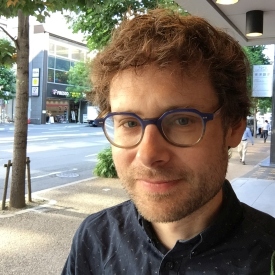I recently organized a panel on Mapping as Strategy for Youth Engagement: Contributing Data to Real City Problems as Civic Learning, with Eric Gordon, Akili Lee, Elisabeth Soep and Nigel Jacob. The occasion was the Digital Media and Learning conference in Chicago on March 14-16, 2013.
Here is the panel description:
Mapping is one of several genres of data collection that can connect youth with physical space, neighborhood streets, and city planning. What structures of participation are emerging? Can we sustain participation beyond reporting a few potholes? Based on the leading examples today, do we need more leadership from city government to structure youth participation, or more commitment from grassroots organizations to generate useful data?
This panel considers several of the most prominent projects at the frontier of mapping and youth — including youth-made mobile apps (from Youth Radio), city planning (from Community PlanIt), and food access and map-based storytelling (from RideSouthLA). The respondent for the panel is a city official (Boston office of New Urban Mechanics). Each participant will justify their case study in terms of contributing to the public good — including working with open data, or advancing city planning, generating media coverage or building human capital.
Our format seeks to tackle hard issues, and avoid romanticizing the case studies. We do this by emphasizing “hard problems” facing the field, and only introducing the case studies in a problem-solving mode, highlighting where more work is needed. Each panelist will begin by proposing a “hard problem,” emphasizing barriers to combining learning with authentic civic contribution. After hearing the problem pitch, a case study will be brought forth in response, not to reveal a solution as much as to clarify what makes the problem hard, and where to begin. We expect to reveal 4-5 core problems, before opening the panel to audience discussion.
Some questions the panel will tackle include:– Integration of online with multiple offline institutions — how do we get organizations to follow up on their promises of collaboration?
– What is the flow between offline and online in terms of experience?
– Since paper remains the primary distribution vehicle for maps in many neighborhoods, how do we integrate digital data collection, and connect paper maps to social networks for distribution?
– Custom apps for mobile devices has incredible appeal for making maps interactive, and for ensuring data collection — but it also has huge costs… what can be done without investing in specialty tools?
– Games can structure participation, but also leave the system vulnerable to attempts to “game the system.” How can we ensure data quality, especially if youth are to substantively contribute to authentic civic needs?
– Do we need different metrics to demonstrate learning — such as “neighborhood belonging” or “collective self-efficacy”?
– Outcomes from the panel will include how city officials and other changemakers can best engage with nascent mobile designs, pitfalls to avoid, and an analysis of some of the platforms we think still need to be created.
